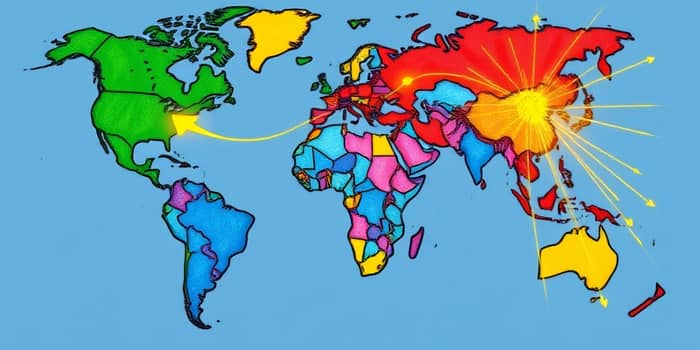
As global investors confront a more complex and volatile landscape in 2025, capital is increasingly fleeing markets deemed high-risk. This shift reflects a potent mix of political frictions, abrupt policy adjustments, and broader economic vulnerabilities. Yet within this challenge lies an opportunity: by understanding the drivers and embracing coordinated responses, nations and investors can foster long-term sustainable growth even amid turmoil.
Drawing on data from the IMF, SEACEN Centre, and the Global Risk Report, this article explores the forces behind rising outflows, quantifies regional impacts, and offers actionable strategies for policymakers and market participants. We aim to inspire resilience and equip stakeholders with practical tools to navigate unpredictability.
Over the past year, geopolitical flashpoints and shifting trade policies have spurred investors to reallocate assets away from emerging markets. The reimposition of tariffs by major economies and the heightened global geopolitical risks noted in Q1 2025 have resonated across continents, straining supply chains and prompting currency fluctuations.
Meanwhile, central banks—particularly the US Federal Reserve—have pursued tighter monetary stances. This uneven monetary policy tightening has dampened growth prospects in more fragile economies and heightened the appeal of safe-haven assets. Emerging-market yields, once a magnet for yield-seeking capital, now compete with rising yields in advanced economies.
China’s sluggish post-pandemic recovery and volatility in commodity prices have further exacerbated concerns in Asia and Latin America. As external shocks ricochet through these regions, investor sentiment becomes increasingly fragile, fueling a cycle of measurable increase in stress on local financial conditions.
Recent data underscores the scale of these movements. Asia-Pacific resident outflows (excluding official reserves) climbed to 4.4% of regional totals, while portfolio flows to emerging markets turned slightly negative in April 2025, driven by equity withdrawals of $9.9 billion. Debt markets saw a modest offset with inflows of $9.7 billion.
The following table distills key metrics by region, illuminating divergent risk profiles and capital trends:
Latin America’s sensitivity to external shocks has manifested in currency depreciation and elevated borrowing costs. In Asia, uneven recovery trajectories have prompted capital to gravitate toward more stable or policy-protected jurisdictions. This fragmentation underscores the need for nuanced, region-specific responses.
Governments and central banks can play a decisive role in restoring confidence. By coordinating efforts across borders and designing targeted interventions, authorities can create a more stable investment climate.
Proactive communication and policy predictability are equally vital. Clear guidance on potential interventions can curb speculative attacks and smooth market reactions to policy adjustments.
Investors seeking to navigate these headwinds must balance caution with opportunity. A diversified, disciplined approach can shield portfolios from sudden outflows while capturing growth where it emerges.
By combining these tactics with rigorous risk management, investors can transform volatility into an avenue for disciplined value creation.
Looking beyond immediate pressures, high-risk regions can chart a sustainable growth trajectory by aligning domestic reforms with broader global trends. Structural enhancements—such as strengthening governance, enhancing digital infrastructure, and diversifying export bases—will underpin resilience.
International cooperation is equally critical. Multilateral development banks, private sector investors, and sovereign wealth funds must deepen partnerships that channel long-term capital into infrastructure, green energy, and human capital development. Such collaborative ventures can recalibrate the narrative from risk aversion to growth opportunity.
Ultimately, the rise in capital outflows need not signal permanent decline. By adopting collaborative multilateral investment platforms and championing transparency, high-risk economies can draw in strategic capital aligned with their development goals.
The surge in capital outflows from high-risk regions is a wake-up call: markets evolve quickly, and laggards risk marginalization. Yet within this upheaval lies the chance to foster innovation, strengthen institutions, and elevate economic resilience.
For policymakers, concerted action and clear communication can transform uncertainty into stability. For investors, disciplined diversification and selective engagement can yield attractive returns. Together, these efforts will shape a financial ecosystem where capital flows reflect enduring value rather than fleeting sentiment.
In the end, resilience is not a passive defense but an active pursuit. By embracing data-driven insights, fostering regional cooperation, and aligning incentives around sustainable growth, stakeholders can navigate volatility and emerge stronger. The path may be challenging, but with foresight and unity, high-risk regions can secure a prosperous future in an ever-changing global economy.
References













